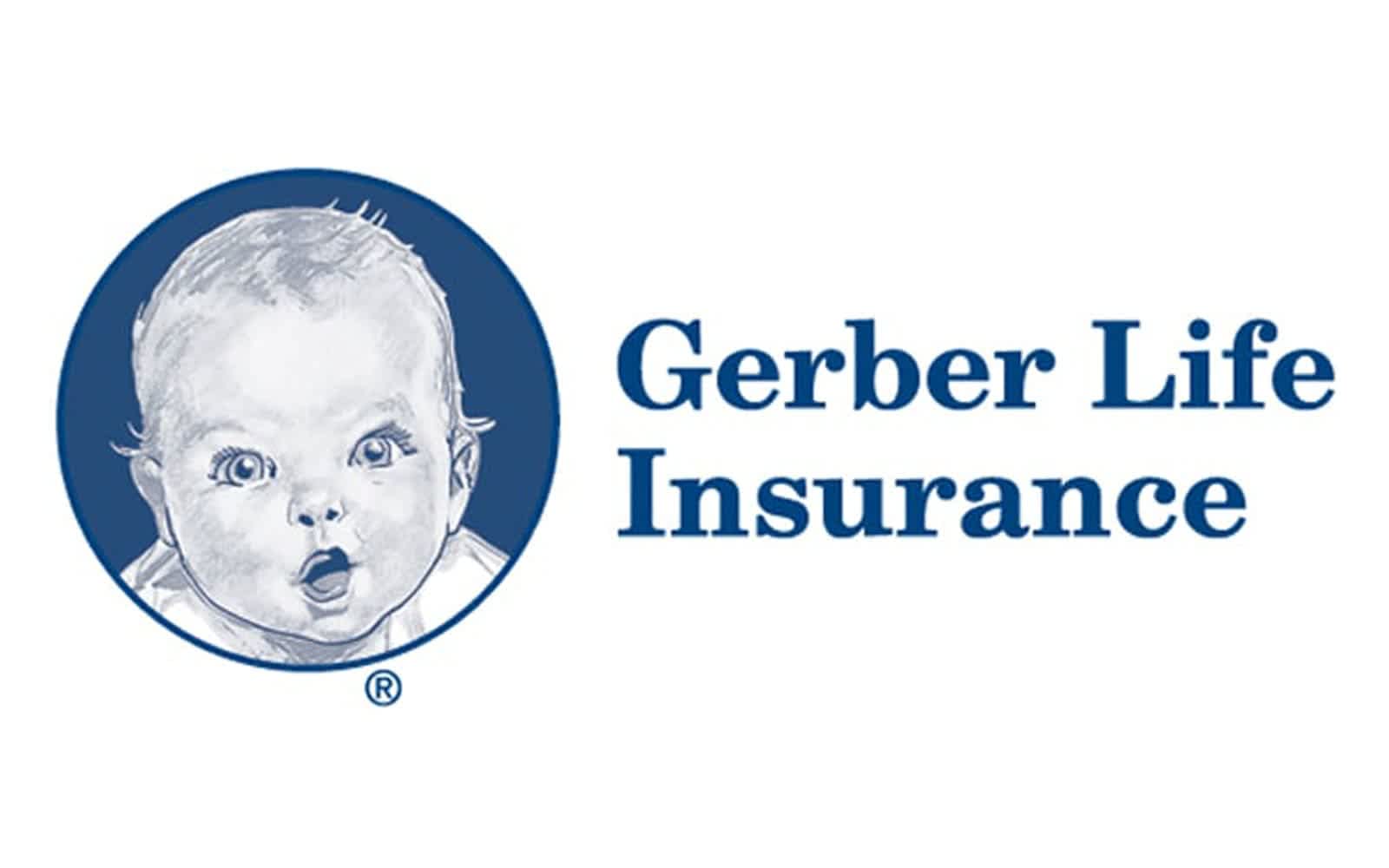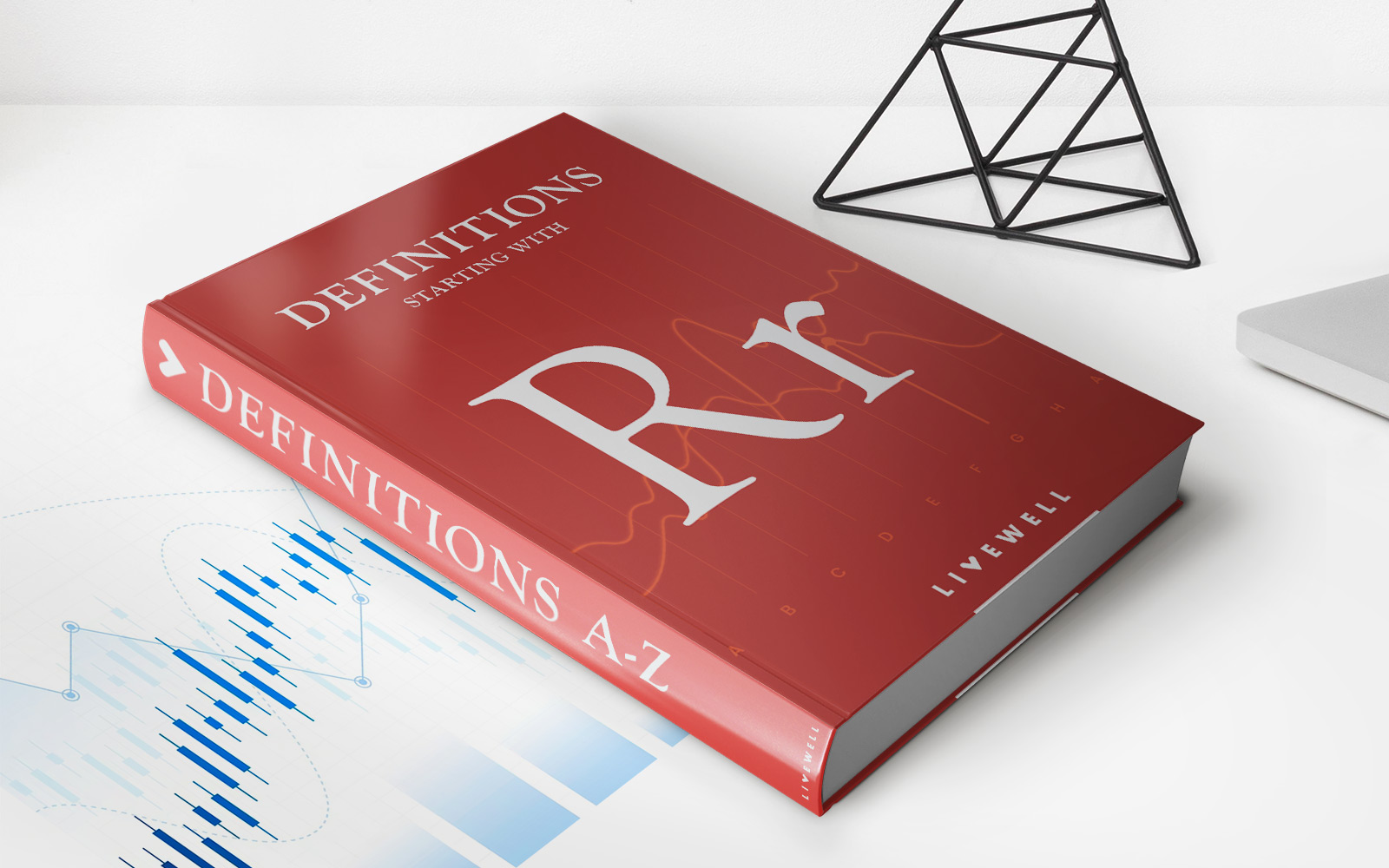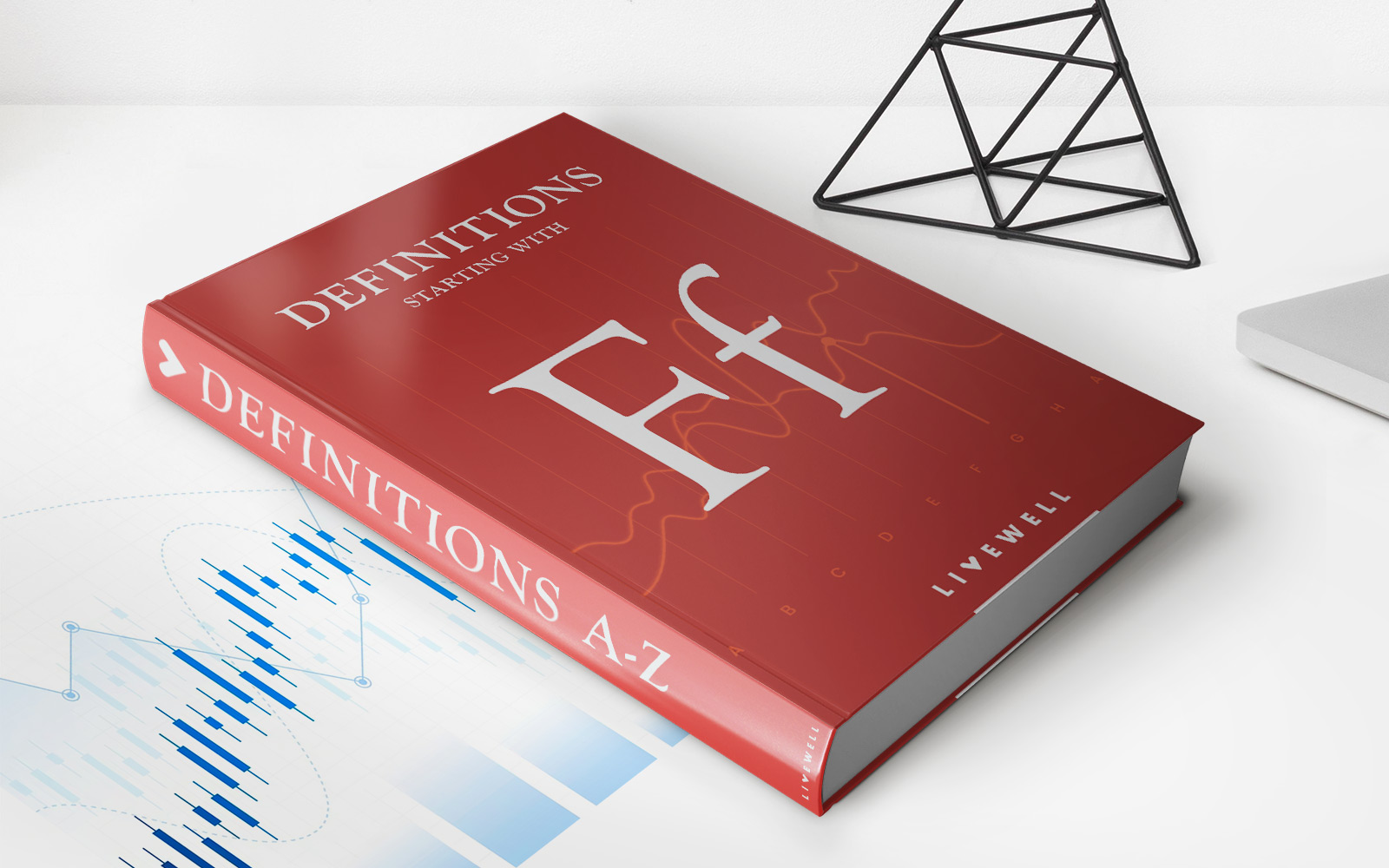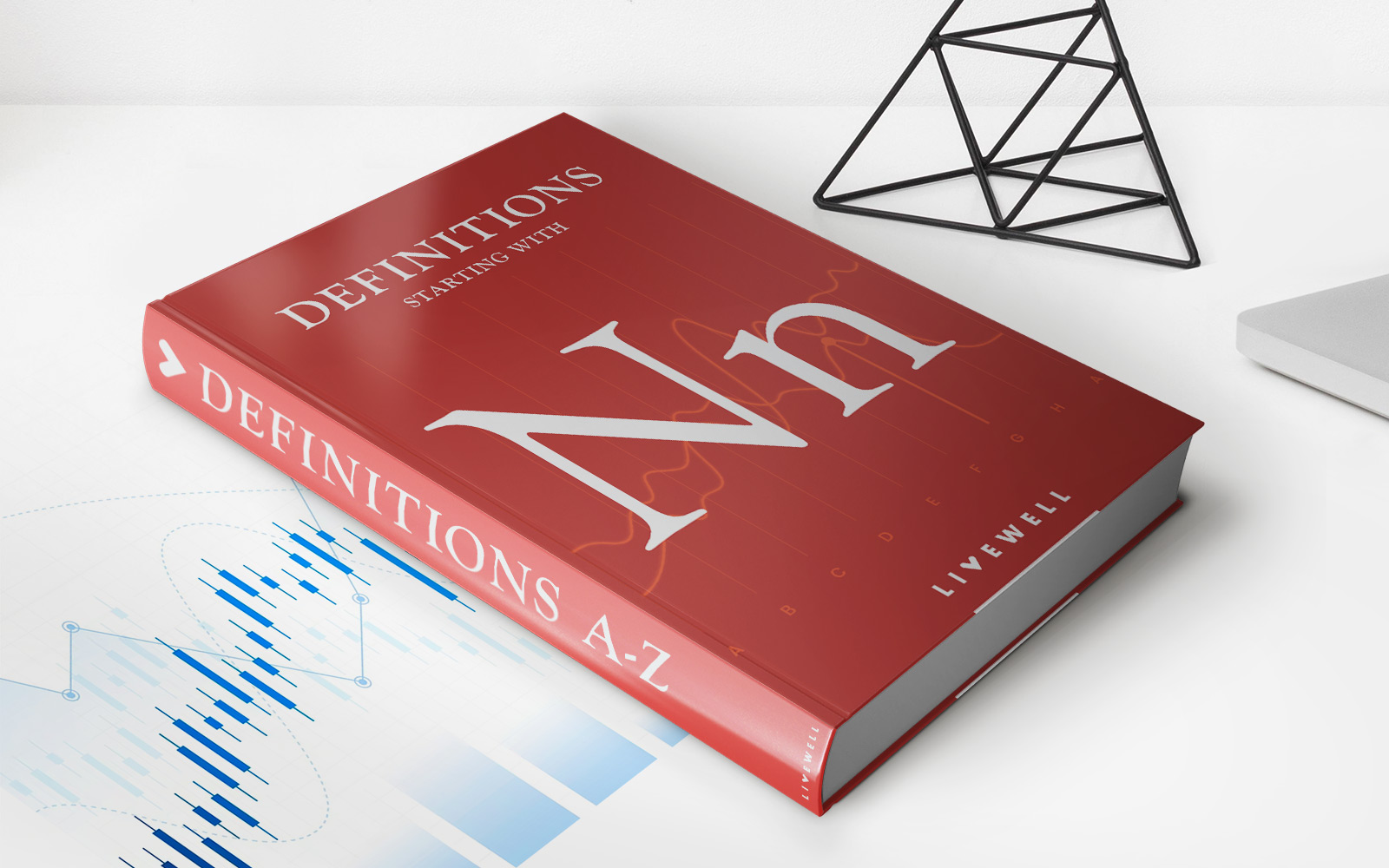

Finance
What Life Insurance Can You Borrow Against?
Modified: February 21, 2024
Discover the different types of life insurance policies that allow you to borrow against your coverage. Explore the financial options available for you.
(Many of the links in this article redirect to a specific reviewed product. Your purchase of these products through affiliate links helps to generate commission for LiveWell, at no extra cost. Learn more)
Table of Contents
- Introduction
- Types of Life Insurance Policies
- Whole Life Insurance
- Universal Life Insurance
- Variable Life Insurance
- Indexed Universal Life Insurance
- How Borrowing Against Life Insurance Works
- Pros and Cons of Borrowing Against Life Insurance
- Reasons to Borrow Against Life Insurance
- Alternatives to Borrowing Against Life Insurance
- Conclusion
Introduction
Life insurance is a crucial financial tool that offers protection and financial security for your loved ones in the event of your passing. However, did you know that some life insurance policies also have a feature that allows you to borrow against the cash value of your policy? This can be a valuable option for accessing funds when you need them most.
There are different types of life insurance policies that offer the ability to borrow against them, including whole life insurance, universal life insurance, variable life insurance, and indexed universal life insurance. Each policy has its own unique features and benefits, giving you the flexibility to choose the one that aligns with your financial goals.
In this article, we will explore the various types of life insurance policies that you can borrow against, how borrowing against life insurance works, the pros and cons of this approach, and alternative options to consider. By understanding the ins and outs of borrowing against life insurance, you can make informed decisions about utilizing this financial tool to meet your specific needs.
Types of Life Insurance Policies
When it comes to borrowing against your life insurance policy, it’s important to understand the different types of policies available. Here are some of the most common types:
- Whole Life Insurance: Whole life insurance provides coverage for your entire life and builds up cash value over time. This type of policy typically offers guaranteed premiums and a fixed death benefit. The cash value can be accessed through loans or withdrawals.
- Universal Life Insurance: Universal life insurance is a flexible policy that allows you to adjust your premium payments and death benefit as your needs change. The policy accumulates cash value, and you can borrow against it or use it to pay premiums.
- Variable Life Insurance: Variable life insurance allows you to invest a portion of your premium into various investment options, such as stocks and bonds. The cash value of the policy fluctuates based on the performance of these investments, and you can borrow against it or make withdrawals.
- Indexed Universal Life Insurance: Indexed universal life insurance offers the opportunity to earn interest based on the performance of a selected market index, such as the S&P 500. This type of policy allows for flexibility in premium payments and death benefit, and the cash value can be accessed through loans or withdrawals.
Each type of life insurance policy has its own set of features and benefits. It’s important to carefully consider your financial goals, risk tolerance, and cash flow needs when choosing the right policy for borrowing against.
Whole Life Insurance
Whole life insurance is a type of permanent life insurance that provides coverage for your entire life, as long as the premium payments are made. One of the key features of whole life insurance is its cash value component.
With a whole life insurance policy, a portion of your premium payments goes towards building cash value over time. This cash value grows on a tax-deferred basis, meaning you won’t have to pay taxes on any earnings until you withdraw or borrow against it.
When you have accumulated enough cash value in your whole life insurance policy, you have the option to borrow against it. This borrowing is done through a policy loan, where the insurance company uses the cash value as collateral. The loan can be used for a variety of purposes, such as paying for a child’s education, covering unexpected medical expenses, or even starting a business.
One of the advantages of borrowing against a whole life insurance policy is that the process is typically quick and straightforward. Since you are essentially borrowing from yourself, there is no need for a credit check or lengthy approval process. Additionally, the interest rates on policy loans can be relatively low compared to other forms of borrowing.
It’s important to note that any unpaid loans against your policy will be deducted from the death benefit payable to your beneficiaries. Therefore, it’s crucial to repay the loan to ensure that your loved ones receive the full amount of the policy’s death benefit.
Overall, whole life insurance can be an attractive option for those looking to access cash without selling their policy or incurring high-interest debt. However, it’s essential to carefully consider the implications of borrowing against your policy and weigh it against other possible alternatives.
Universal Life Insurance
Universal life insurance is a type of permanent life insurance that offers flexibility in premium payments and death benefits. This policy not only provides a death benefit to your beneficiaries but also accumulates cash value over time.
With universal life insurance, a portion of your premium payments goes towards funding the policy’s death benefit, while the remainder is allocated to a cash value account. The cash value grows based on a minimum interest rate set by the insurance company, and you have the potential to earn more if the investments in the cash value account perform well.
One of the advantages of universal life insurance is the ability to borrow against the cash value of the policy. When you need funds, you have the option to take out a policy loan. The loan amount is typically limited to a percentage of the cash value, and interest is charged on the borrowed amount.
What makes universal life insurance unique is the flexibility it offers. You have the freedom to adjust your premium payments and death benefit as your financial circumstances change. If you have accumulated enough cash value, you may use it to pay premiums, reducing or eliminating the need for additional out-of-pocket payments.
It’s important to note that policy loans from universal life insurance policies also come with certain considerations. The outstanding loan balance will accrue interest, which will reduce the cash value and potentially impact the death benefit. Additionally, unpaid loan balances can be deducted from the death benefit, so it’s important to repay the loan to ensure your beneficiaries receive the full intended benefit.
Universal life insurance policies offer a level of flexibility and the ability to access funds through policy loans. It can be a suitable option for individuals who value the combination of life insurance protection with the potential for cash accumulation and borrowing flexibility. However, it’s crucial to evaluate the terms, interest rates, and potential impact on the policy’s cash value and death benefit before deciding to borrow against the policy.
Variable Life Insurance
Variable life insurance is a type of permanent life insurance that combines a death benefit with investment options. With this policy, you have the opportunity to allocate a portion of your premium payments to a variety of investment options, such as stocks, bonds, and mutual funds.
The cash value of a variable life insurance policy fluctuates based on the performance of the chosen investments. This means that the value of your policy can increase or decrease depending on the market conditions and the performance of the underlying investments.
One of the advantages of variable life insurance is the potential for higher growth compared to other types of life insurance policies. Since you have control over the investment options, you can take advantage of market gains and potentially accumulate a substantial cash value over time.
Borrowing against a variable life insurance policy works similarly to other types of policies. You can take out a policy loan from the accumulated cash value, using the investments as collateral. The loan amount is typically limited to a percentage of the cash value, and interest is charged on the borrowed amount.
It’s important to note that variable life insurance policies come with certain risks. The cash value of the policy is subject to market fluctuations, which means it can decrease in value if the investments perform poorly. This can impact the amount available for borrowing and potentially reduce the death benefit.
Additionally, borrowing against a variable life insurance policy may have tax consequences. If the policy is considered a modified endowment contract (MEC), any policy loans may be subject to taxes and penalties. It’s advisable to consult with a financial advisor or tax professional to understand the potential tax implications before taking out a loan.
Variable life insurance can be a suitable option for individuals who are comfortable with investment risks and seek the potential for higher growth. However, it’s crucial to carefully evaluate the investment options, fees, and potential market volatility before deciding to borrow against a variable life insurance policy.
Indexed Universal Life Insurance
Indexed universal life insurance (IUL) is a type of permanent life insurance that offers both a death benefit and the potential for cash value accumulation. What sets IUL apart is its connection to a specific market index, such as the S&P 500.
With an indexed universal life insurance policy, a portion of your premium payments go towards funding the death benefit, while the remaining amount is allocated to a cash value account. The cash value growth is tied to the performance of the chosen market index, allowing you to potentially earn interest based on the index’s positive movement.
Indexed universal life insurance policies provide borrowing options, allowing you to access the cash value through policy loans. The loan amount is typically capped at a percentage of the cash value, and interest is charged on the borrowed amount.
One of the advantages of IUL is the potential for cash value growth. If the selected market index performs well, the cash value of the policy can increase significantly over time. Furthermore, IUL policies offer flexibility in premium payments and the death benefit, allowing you to adjust these components throughout the life of the policy to align with your changing financial needs.
It’s important to note that indexed universal life insurance policies also come with certain considerations. The interest credited to the cash value is typically subject to a cap or a participation rate, which means that your cash value growth may be limited even if the chosen index performs exceptionally well. Additionally, there may be a minimum guaranteed interest rate to protect against significant market downturns.
When considering borrowing against an indexed universal life insurance policy, it’s essential to evaluate the policy’s terms, including interest rates, loan provisions, and any potential impact on the cash value and death benefit. Understanding the policy’s features and potential risks will help you make an informed decision.
Indexed universal life insurance can be a suitable option for individuals who want the potential for cash value growth tied to market performance. However, it’s crucial to carefully assess the policy’s terms and the associated risks before deciding to borrow against an indexed universal life insurance policy.
How Borrowing Against Life Insurance Works
Borrowing against a life insurance policy involves accessing the cash value that has accumulated within the policy. The process varies depending on the type of policy you have, but generally follows a similar structure.
First, you need to determine if your life insurance policy allows for borrowing against the cash value. Not all policies offer this feature, so it’s important to review your policy documents or reach out to your insurance agent to confirm.
If your policy allows for borrowing, you can then request a policy loan from the insurance company. The loan amount is typically limited to a percentage of the cash value, often around 90%. You’ll need to complete a loan application, providing details about the loan amount, purpose, and repayment terms.
Once approved, the insurance company will disburse the loan amount to you. The loan is typically non-taxable since it is an advance on the cash value and not considered income. However, it’s always advisable to consult with a tax professional to understand any potential tax implications specific to your situation.
Policy loans usually accrue interest, which will affect the overall amount you owe. The interest rate can vary depending on the insurance company and the terms of your policy. It’s important to review the loan terms carefully, including the interest rate, repayment schedule, and any penalties or fees associated with the loan.
Repayment of the loan can typically be done in one of two ways. The first option is to make regular loan payments, similar to a traditional loan. These payments would consist of both principal and interest and are typically made on a monthly basis.
The second option is to have the interest automatically deducted from the policy’s cash value. This approach allows you to forgo regular loan payments, but it’s crucial to monitor the loan balance and ensure that the interest does not exceed the policy’s cash value growth.
It’s important to note that any outstanding loans against your policy will reduce the death benefit payable to your beneficiaries. If the loan is not repaid in full at the time of your passing, the outstanding balance, including accrued interest, will be deducted from the death benefit amount.
Understanding the process of borrowing against a life insurance policy is essential to make informed decisions about accessing funds when needed. It’s advisable to review your policy documents and consult with your insurance agent to fully comprehend the terms and implications before proceeding with a policy loan.
Pros and Cons of Borrowing Against Life Insurance
Borrowing against your life insurance policy can provide access to funds when you need them most. However, it’s important to weigh the pros and cons before making a decision. Here are some considerations to keep in mind:
Pros:
- Access to Cash: Borrowing against your life insurance policy allows you to access funds without selling assets or incurring high-interest debt.
- No Credit Check: Policy loans do not typically require a credit check since you are essentially borrowing from yourself. This can be advantageous if you have a less-than-ideal credit history.
- Low Interest Rates: Policy loans often have lower interest rates compared to traditional loans or credit cards. This can save you money on interest charges.
- Quick and Easy: The process of borrowing against a life insurance policy is usually quick and straightforward. There is no lengthy approval process or extensive paperwork involved.
- Flexible Repayment: Depending on your policy and preferences, you may have the flexibility to choose between regular loan payments or having the interest automatically deducted from the policy’s cash value.
Cons:
- Reduced Death Benefit: Any outstanding policy loans will reduce the death benefit payable to your beneficiaries. It’s important to repay the loan to ensure your loved ones receive the full intended benefit.
- Impact on Cash Value: Borrowing against your policy can impact the cash value accumulation. It’s crucial to understand how the loan will affect your policy’s cash value growth and potential future returns.
- Interest Accumulation: Policy loans accrue interest, which can increase the overall amount you owe. Failing to make regular loan payments or monitor the loan balance can lead to substantial interest charges over time.
- Tax Considerations: Policy loans are typically tax-free, but it’s essential to be aware of any potential tax implications, such as loan interest exceeding the policy’s cash value growth or the policy being classified as a modified endowment contract.
- Risk of Policy Lapse: If the outstanding loan balance and interest become too high, it could lead to a policy lapse if there is insufficient cash value to cover the charges. This would result in the loss of coverage.
Considering these pros and cons, it’s important to carefully evaluate your financial situation, goals, and the terms of your life insurance policy before deciding to borrow against it. The decision should align with your overall financial strategy and the specific needs of your situation.
Reasons to Borrow Against Life Insurance
Borrowing against your life insurance policy can be a strategic financial move in certain circumstances. Here are some common reasons why individuals choose to access the cash value of their life insurance:
- Emergency Expenses: Life is full of unexpected events, such as medical emergencies or sudden repairs. Borrowing against your life insurance can provide a source of funds to cover these unforeseen expenses without depleting your savings or resorting to high-interest loans.
- Education Expenses: If you have a whole life or universal life insurance policy, borrowing against it can help you finance your or your child’s education. The loan proceeds can be used to pay for tuition, books, housing, or any other educational expenses.
- Debt Consolidation: If you have multiple high-interest debts, such as credit cards or personal loans, borrowing against your life insurance policy can be a way to consolidate your debts. By paying off these high-interest debts, you can lower your overall interest payments and simplify your financial obligations.
- Home Improvements: Planning to renovate your home? Borrowing against your life insurance policy can be an affordable way to fund your home improvement projects. This can increase the value of your property and create a more comfortable living space.
- Starting a Business: Entrepreneurs often face challenges when it comes to securing funding for their business ventures. Borrowing against a life insurance policy can provide the necessary capital to launch a new business or expand an existing one.
- Estate Planning: Borrowing against your life insurance policy can be a strategic estate planning tool. By accessing the cash value, you can distribute funds to your heirs while you are still alive, ensuring their financial well-being and potentially reducing taxable estate assets.
- Opportunity Investments: Life insurance policy loans can also be used to seize investment opportunities. Whether it’s investing in real estate, stocks, or a new business venture, borrowing against your policy can provide the initial capital needed to take advantage of these opportunities.
Ultimately, the decision to borrow against your life insurance policy should align with your financial goals and specific circumstances. It’s important to carefully consider the interest rates, potential impact on the death benefit, and repayment terms before making a borrowing decision. Consulting with a financial advisor can help you evaluate whether borrowing against your life insurance policy is the right move for you.
Alternatives to Borrowing Against Life Insurance
While borrowing against your life insurance policy can be a viable option in certain situations, it’s important to consider alternative methods of accessing funds before making a decision. Here are some alternatives to borrowing against your life insurance:
- Emergency Fund: Building and maintaining an emergency fund is essential. Having a separate savings account specifically for unexpected expenses can provide you with a readily available source of funds without needing to borrow against your life insurance or incur debt.
- Personal Loan: If you have a good credit history, you may consider applying for a personal loan from a financial institution. Personal loans often have competitive interest rates and fixed repayment terms, providing you with a structured way to access the funds you need.
- Home Equity Line of Credit (HELOC): If you own a home and have built up equity, a HELOC can be a viable option. This line of credit allows you to borrow against the value of your home, giving you access to potentially larger amounts of money at competitive interest rates.
- Credit Cards: While credit cards should be used with caution, they can be a temporary solution for smaller expenses or short-term cash flow needs. However, it’s crucial to pay off the balance as quickly as possible to avoid high-interest charges.
- Retirement Savings: If you have retirement savings such as a 401(k) or an Individual Retirement Account (IRA), you may consider withdrawing from these accounts. However, this should be done sparingly and with caution, as it can impact your long-term retirement goals and may come with penalties or taxes.
- Side Hustles or Part-Time Work: Increasing your income through side gigs or part-time work can be an effective way to generate additional funds without resorting to borrowing. Explore opportunities based on your skills or interests to create an alternative source of income.
- Family and Friends: In certain circumstances, you may consider reaching out to family or friends for financial assistance. It’s important to approach these arrangements with transparency and establish clear terms for repayment to maintain healthy relationships.
When evaluating alternative options, consider factors such as interest rates, fees, repayment terms, and potential impact on your long-term financial goals. Each method has its advantages and disadvantages, so it’s crucial to assess which one aligns best with your specific needs and circumstances.
Ultimately, the choice between borrowing against your life insurance policy and exploring alternative methods depends on your unique situation and financial objectives. It’s recommended to consult with a financial advisor to evaluate these options and make an informed decision based on your individual circumstances.
Conclusion
Borrowing against your life insurance policy can provide a valuable source of funds when you need them most. Whether you’re facing unexpected expenses, pursuing educational opportunities, consolidating debt, or investing in a business venture, accessing the cash value of your policy can be a strategic move.
However, it’s crucial to carefully consider the pros and cons of borrowing against your life insurance policy before making a decision. Understand the impact on the death benefit, the potential interest charges, and how it may affect your policy’s cash value growth. Additionally, explore alternative options such as emergency funds, personal loans, or utilizing retirement savings.
Consulting with a financial advisor can provide valuable insights and help you navigate the complexities of borrowing against your life insurance. They can assess your specific situation, evaluate the available options, and guide you towards the most appropriate solution for your needs.
Remember, the decision to borrow against your life insurance policy should align with your financial goals and circumstances. Evaluate the terms, consider the potential risks, and carefully assess the impact on your overall financial picture.
By making an informed decision, you can utilize your life insurance policy as a financial tool to meet short-term needs, while still maintaining the long-term benefits and protection it provides for your loved ones.














